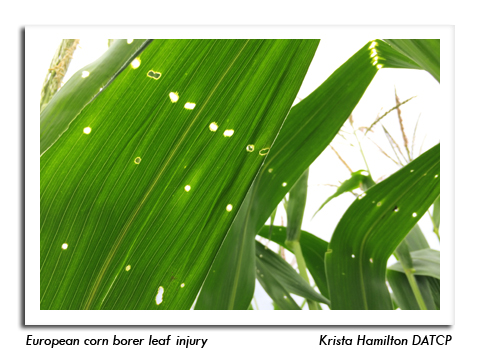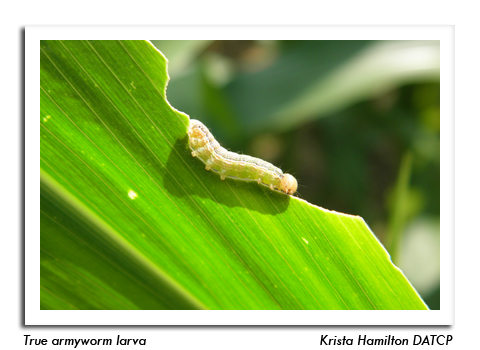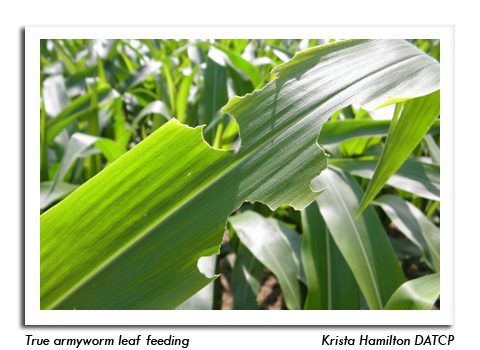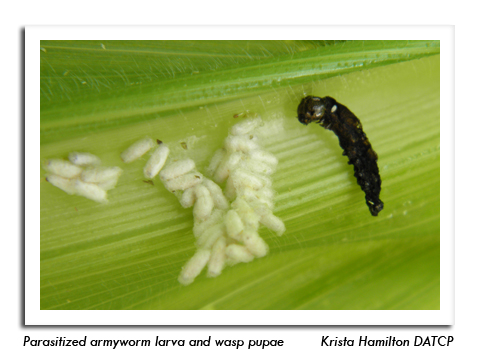
 |
|
|
Corn
Volume 58 Number 10 Date 07/11/2013 EUROPEAN CORN BORER - Surveys conducted across the southern two-thirds of the state since the last report found minor corn borer populations in 13 of 81 fields examined. A moderate infestation affecting 27% of plants was noted near Elk Mound in Dunn County, but in all other fields fewer than 17% of the plants were infested. Development of this insect has accelerated in the last two weeks and first generation larvae are entering the midribs of corn leaves. The treatment window has closed in the southern and west-central areas with the accumulation of 1,100 degree days (modified base 50°F). STALK BORER - Larval infestations are light in most corn fields, seldom exceeding 5%, and then primarily near field margins. A few individual fields in Fond du Lac and Monroe counties had injury rates of 10-20% in the first three edge rows, but significant damage was not expected since the plants were in the V7-V9 stages. WESTERN BEAN CUTWORM - The first moth of the season appeared in a trap near Montello in Marquette County on July 3 and six more were registered in Columbia, Monroe, Trempealeau and Wood counties from July 4-10. The counts of 1-2 per trap represent the start of the adult flight period. According to the western bean cutworm phenology model, 25% emergence of the annual population should occur by 1,320 degree days (base 50°F), or July 11 near Beloit, July 16 near Madison, July 23 near Eau Claire, and July 29 near Green Bay. Oviposition on the flag leaf of corn has started in areas where the adults are active. Scouting for eggs and small larvae is recommended as soon as the first moth is trapped. TRUE ARMYWORM - Larvae are still fairly common in corn and many surveyed fields are showing 1-7% of plants with ragged leaves and defoliation. Continued scouting will be required throughout July since black light traps are registering locally heavy flights (301 moths at Janesville from June 26-July 10) and environmental conditions remain very favorable for armyworm outbreaks. One field in the Reedsburg area of Sauk County surveyed on July 2 had an infestation involving 34% of the plants, but insecticidal treatment was not needed since nearly all of the larvae had been parasitized (see image below of black larvae and wasp pupae). This observation suggests natural enemies are regulating populations in some fields and this should be considered when making treatment decisions. -- Krista Hamilton, DATCP Entomologist 





|
|
|